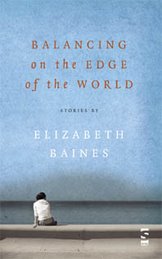Funny how a domestic upheaval can make you reassess your relationship to your physical books - both one's personal relationship with them, and their place in our newly digital book world. My relationship with my physical books had been - well, you know how it is after years without change: you get too comfortable, you start taking it all for granted, you hardly notice the accretion of the years or your habits, you even lose sight of some of the things about it all that matter, so it's not actually so comfortable, really, it's all sort of running away with you...
We have books all over the house - in the back room downstairs we have poetry, short-story anthologies and non-fiction; the room I write in is crammed with lit crit, feminist books and lit mags. John's a psychologist by profession and writes on linguistics so, naturally, the room he writes in houses his psychology and linguistics books as well as his particular poetry collection; there's a shelf of cookery books in the kitchen, of course, and I have a line of books published by Salt at my bedside. Our biggest collection, fiction, we have always kept on these shelves in the front room downstairs, and when we came to strip the room in the summer for fairly major building work and decorating, it took me a fortnight of afternoons to shift the books elsewhere. Painting the shelves was a pretty time-consuming job and took up gallons of paint, but spacious as they are I had begun to realise that they were no longer adequate for the books they'd been carrying: the books been double- and even triple- stacked, with others piled horizontal on top of the rows (you can see something of how it was in the sidebar in the videos of me reading from The Birth Machine). We hadn't been able even to see more than half of them and had forgotten we owned some of them, and the difficulty of getting to some of them had meant that they'd got more and more muddled as the years went by.
So what to do when I finally finished painting a couple of weeks ago and it was time to fill the shelves again? John suggested we limit them to classics and hardbacks. I wanted to know if he was mad: we wouldn't even fill the shelves and then we'd have nowhere for the modern paperbacks of which we have far, far, more. But I was wrong. We have far more of everything than I'd realised. Here below are the shelves filled as John suggested, and we still have boxes and boxes of paperbacks lining the landing, and we're going to have to go to Ikea for more shelving for the landing.
But I tell you what: I only found one plastic bag's worth that I was prepared to take down to the charity shop...



















